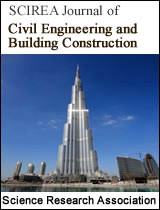Effect of Mortar Bleeding on Surface Layer Permeability After Hardening
DOI: 10.54647/cebc560119 53 Downloads 41004 Views
Author(s)
Abstract
In this study, we examined evaluation methods based on hydraulic flux measured with the permeability-testing device GWT-4000 and its relationship with bleeding, which affects surface layer quality. We also analyzed the effects on bleeding of the permeability distribution in the height direction of a sample. The results showed that the hydraulic flux q600 of the driving surface was higher than that of the bottom surface. Moreover, we could determine the bleeding effects. The hydraulic flux q600 of the bottom surface was strongly correlated to the amount of bleeding in the small container. It was also found that the hydraulic flux q600 only captured the permeability of the top-most layer, did not capture the effects due to the mix proportion factors in the height direction, and was primarily affected by the mold interface.
Keywords
Bleeding, surface layer, permeability, permeability test, GWT-4000, hydraulic flux
Cite this paper
Yuto Horiuchi, Keita Hayashi, Ayumu Yasue, Shigeru Fujimori, Toshitsugu Inukai,
Effect of Mortar Bleeding on Surface Layer Permeability After Hardening
, SCIREA Journal of Civil Engineering and Building Construction .
Volume 8, Issue 1, February 2023 | PP. 65-80.
10.54647/cebc560119
References
| [ 1 ] | M. Hoshino and T. Tomabechi (1980). Relationship between bleeding phenomena and the strength of each concrete section: II. Strength of each sample section and bleeding water amount. Summaries of Technical Papers of the Annual Meeting of the Architectural Institute of Japan, 55, 55–56. |
| [ 2 ] | K. Hayakawa and T. Kato (2012). Effect of mix proportion and construction method on the quality of cover concrete. Journal of JSCE E2, 68-4, 399-409. |
| [ 3 ] | K. Hayashi, A. Yasue, T. Inukai and S. Fujimori (2019). Research on permeability evaluation methods using a pressurized permeability testing device and the effect of mix proportional factors on the permeability of a hardened mortar surface layer. Proceedings of the Japan Concrete Institute, 41-1, 533-538. |
| [ 4 ] | N. Ikawa, Y. Tamaoka and A. Hosoda (2018). Fundamental study on evaluation criteria of cover concrete quality of concrete structures by surface water absorption test. Proceedings of the Japan Concrete Institute, 29, 101-109. |
| [ 5 ] | Japan Concrete Institute (2017). Research committee report on bleeding control for improving durability of structures, 37-38. |
| [ 6 ] | T. Inukai, S. Hatanaka, N. Mishima and R. Kaneko (2005). Experimental study on bleeding behavior of free water in mortar based on a visible evaluation method. Transactions of AIJ, 70-590, 1-7 |

